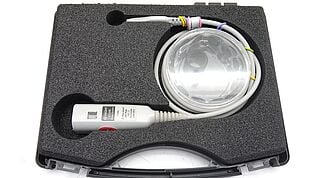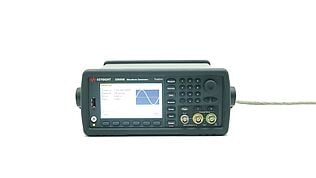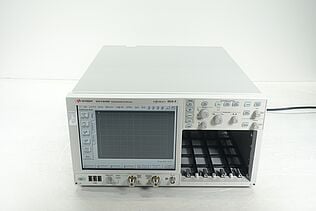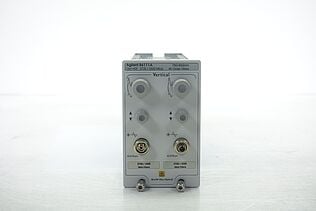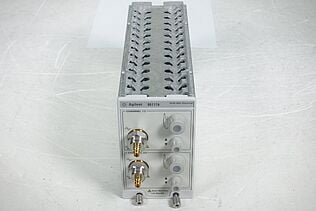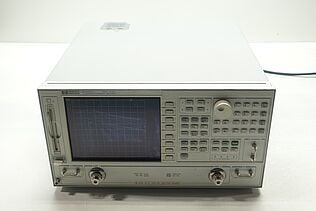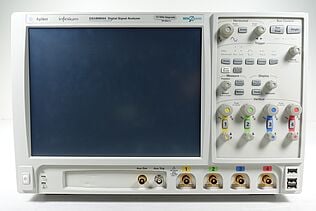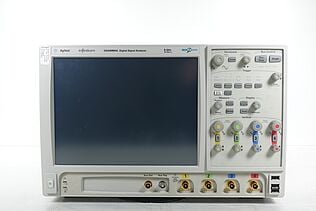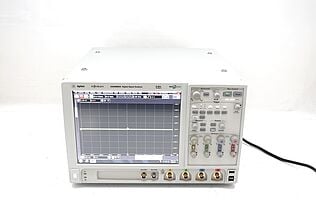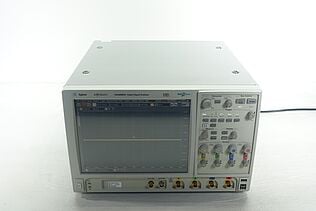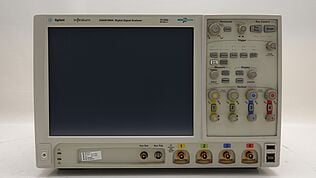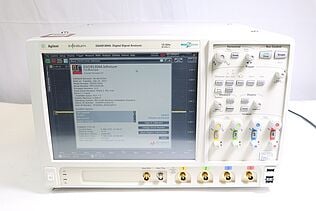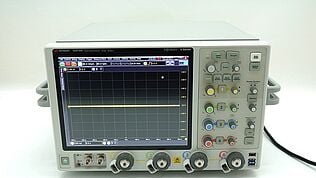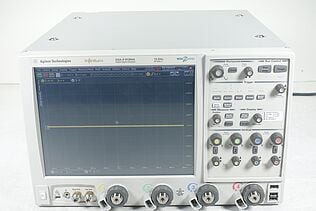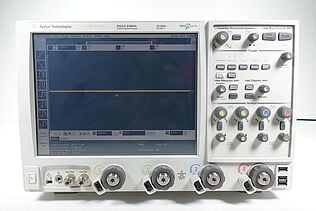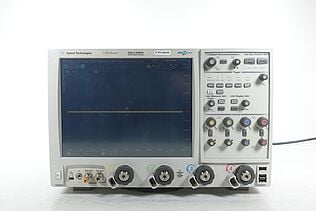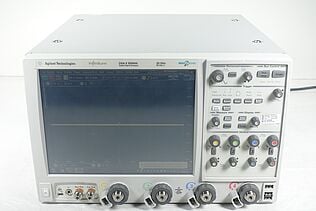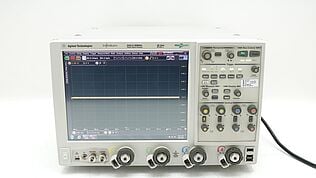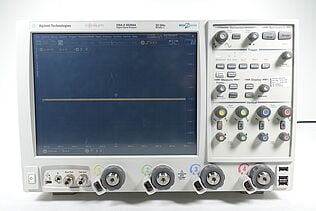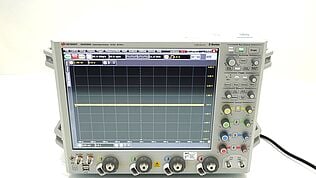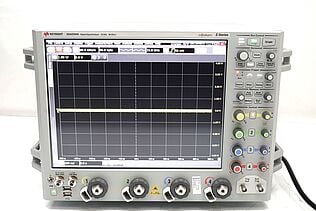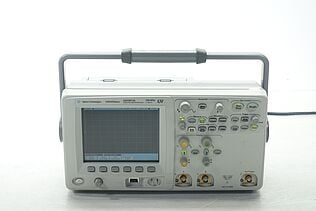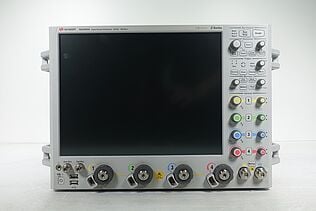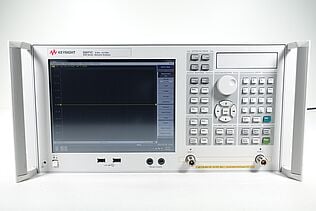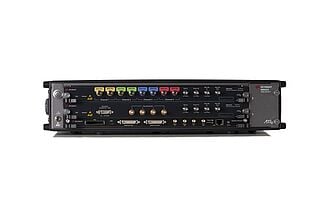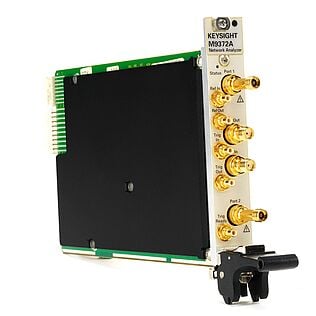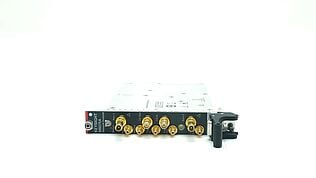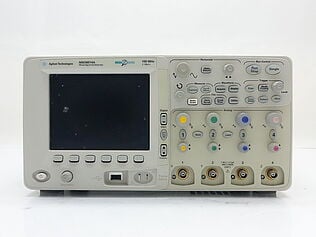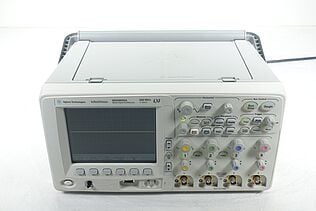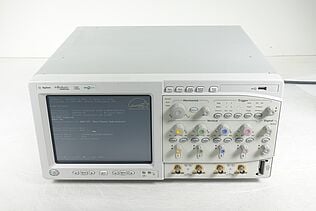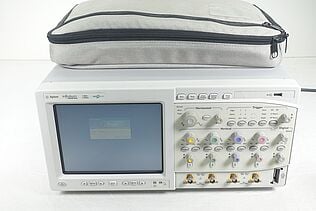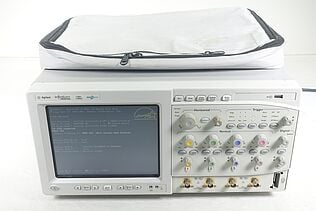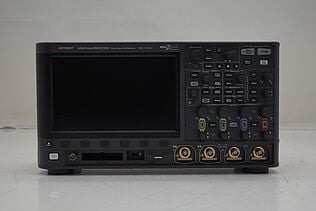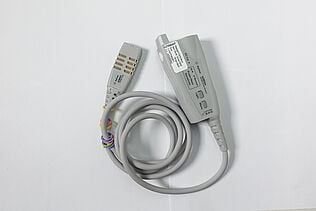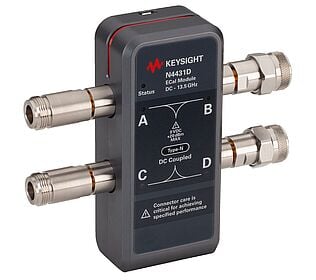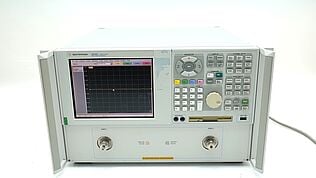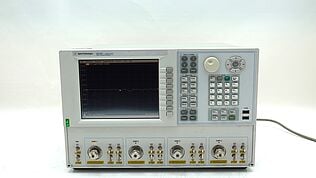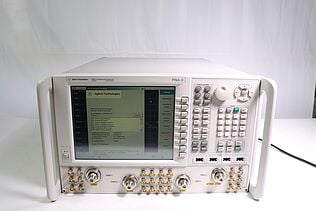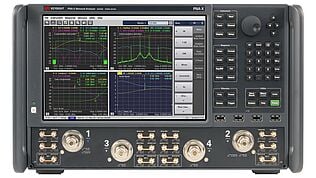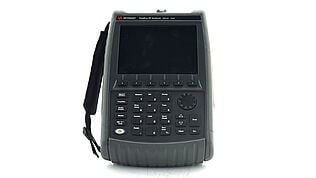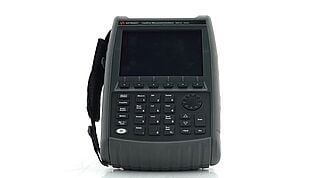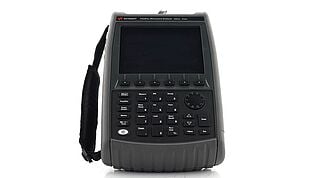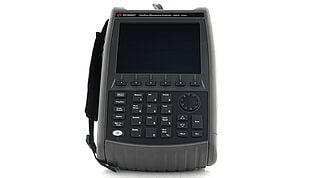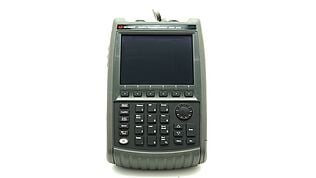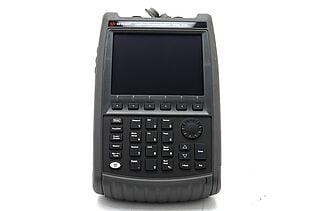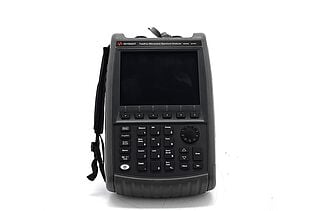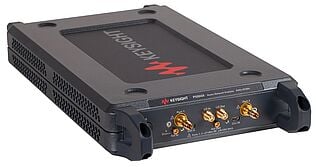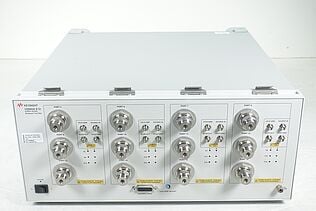- Introduction
- Introduction
- What is a Wavelength?
- Wavelength Definition
- Common Units
- What is Frequency?
- Frequency Definition
- Standard Units
- Upgrade Your Toolkit with Keysight's Trusted Refurbished Equipment
- The Relationship Between Wavelength and Frequency
- Conversion Formula
- What is a Wavelength-to-Frequency Calculator?
- Typical Inputs
- How to Use the Wavelength-to-Frequency Calculator
- Tips for Ensuring Accuracy
- The Physics Behind the Conversion
- Electromagnetic Spectrum
- Speed of Light
- Practical Applications of Wavelength to Frequency Conversion
- Communication Systems
- Fiber Optics
- Radio Broadcasting
- Astronomy and Space Research
- Medical Imaging
- Troubleshoot Common Issues
- 1. Incorrect Units
- 2. Misunderstanding the Speed of Light
- 3. Confusing Wavelength with Frequency
- 4. Rounding Errors
- 5. Ignoring the Electromagnetic Spectrum Range
- 6. Using Incompatible Scales
- 7. Human Error in Data Entry
- Why You Need Accurate Equipment for Wavelength to Frequency Conversions
- Comparing New and Used Equipment
- Engineer-Approved Quality: Find Your Perfect Match in Our Premium Used Equipment
- Conclusion: How To Elevate Precision in Frequency Calculations
- Whenever You’re Ready, Here Are 5 Ways We Can Help You
- Popular Used Oscilloscopes
Master the art of converting wavelength to frequency with our intuitive calculator and comprehensive guide. Whether you're a student, a professional, or simply curious about physics, this guide provides step-by-step instructions, practical tips, and real-world applications to enhance your understanding of electromagnetic wave properties.
What is a Wavelength?
Wavelength is a fundamental concept in the study of electromagnetic waves, crucial for understanding phenomena ranging from light to radio waves.
Wavelength Definition
Wavelength refers to the distance between consecutive points of similar phase in a wave, such as two adjacent peaks or troughs. In simpler terms, it's the length of one complete wave cycle. We measure wavelength along the direction of wave propagation.
Common Units
- Meters (m): Used for radio waves and other longer wavelengths.
- Nanometers (nm): Commonly used for light waves and other types of radiation with shorter wavelengths.
What is Frequency?
Frequency is another key aspect of wave phenomena, closely related to wavelength and equally important in fields like telecommunications, acoustics, and physics.
Frequency Definition
Frequency measures the number of wave cycles passing a fixed point per unit of time. It indicates how frequent the waves occur. Frequency determines many characteristics of waves, including their energy and, in the case of light, color. Frequency is typically measured as the number of cycles per second.
Standard Units
- Hertz (Hz): The most common unit, where 1 Hz equals one cycle per second.
- Kilohertz (kHz), Megahertz (MHz), and Gigahertz (GHz) are also widely used, particularly in radio and telecommunications, to denote thousands, millions, and billions of cycles per second, respectively


Upgrade Your Toolkit with Keysight's Trusted Refurbished Equipment
The Relationship Between Wavelength and Frequency
Wavelength and frequency are two sides of the same coin in the study of electromagnetic waves. They share an inverse relationship, meaning as one increases, the other decreases.
- Inverse proportionality: The longer the wavelength, the lower the frequency, and vice versa. This relationship is fundamental in understanding the behavior of electromagnetic waves.

Conversion Formula
- To convert wavelength to frequency: Frequency (Hz) = Speed of Light (m/s) / Wavelength (m)
- To convert frequency to wavelength: Wavelength (m) = Speed of Light (m/s) / Frequency (Hz)
The speed of light (c) is approximately \(3 × 10^8 \) meters per second.
Below is a table comparing different types of electromagnetic waves, highlighting their typical wavelengths and corresponding frequencies.
| Type of Wave | Typical Wavelength Range | Corresponding Frequency Range |
|---|---|---|
| Radio Waves | 1 mm – 100 km | 3 kHz – 300 GHz |
| Microwaves | 1 mm – 1 m | 300 MHz – 300 GHz |
| Infrared | 700 nm – 1 mm | 300 GHz – 430 THz |
| Visible Light | 400 – 700 nm | 430 – 790 THz |
| Ultraviolet | 10 – 400 nm | 790 THz – 30 PHz |
| X-rays | 0.01 – 10 nm | 30 PHz – 30 EHz |
| Gamma Rays | Less than 0.01 nm | Greater than 30 EHz |
What is a Wavelength-to-Frequency Calculator?
A wavelength-to-frequency calculator is a specialized tool designed to simplify the process of converting the wavelength of an electromagnetic wave to its frequency, and vice versa. It is particularly useful in fields such as physics, engineering, and telecommunications.
- Simplifies conversions: The calculator automates the conversion process using the fundamental relationship between wavelength and frequency. This removes the need for manual calculations, which can be time-consuming and prone to errors.
Typical Inputs
- Wavelength: The length of the wave, which can be input in various units like meters, centimeters, or nanometers.
- Speed of light in medium: This is usually the speed of light in a vacuum, which is approximately \(3×10^8\) meters per second. The calculator might also allow for different speeds if waves are traveling through mediums other than a vacuum.
- Frequency: The number of occurrences of a repeating event per unit of time, measured in Hertz (Hz), where 1 Hz equals one cycle per second. For the purpose of wavelength-to-frequency conversion, users input the desired frequency to find the corresponding wavelength or vice versa.
How to Use the Wavelength-to-Frequency Calculator
Using a wavelength-to-frequency calculator is straightforward. Follow these steps for accurate results:
- Enter wavelength: Input the wavelength of the electromagnetic wave. Ensure that you select or input the correct unit (e.g., meters, nanometers).
- Choose or input the speed of light: Most calculators use the standard speed of light in a vacuum. If the calculator allows, input the speed of light in the medium through which the wave is traveling, if different from a vacuum.
- Calculate frequency: After entering the necessary information, click the calculate button. The calculator will display the frequency corresponding to the entered wavelength.
- Results interpretation: The frequency will typically be given in Hertz (Hz). Some calculators may offer the option to view results in different frequency units, such as kHz, MHz, or GHz.
Tips for Ensuring Accuracy
- Double-check units: Always ensure that the units for wavelength are consistent with the units used in the calculator settings.
- Use correct values for the speed of light: Be aware of the medium in which the wave is traveling. The speed of light differs in mediums other than a vacuum.
- Verify inputs: Recheck the entered values before calculating to avoid errors.
- Consult reference materials: If unsure about any value or unit, consult relevant physics or engineering reference materials for clarification.
Following these instructions and tips will help you obtain accurate and reliable results from a wavelength-to-frequency calculator.
The Physics Behind the Conversion
Understanding the conversion between wavelength and frequency requires a deeper dive into the scientific principles governing the properties of waves, particularly in the context of the electromagnetic spectrum.
Electromagnetic Spectrum
This spectrum encompasses all types of electromagnetic radiation, ranging from very long radio waves to very short gamma rays. Each type of radiation within the spectrum is categorized based on its wavelength (or frequency).
- Radio waves: These have the longest wavelengths, from about a millimeter to hundreds of meters or more.
- Microwaves: Shorter than radio waves, microwaves range from millimeter to centimeter wavelengths.
- Infrared: This radiation has wavelengths shorter than microwaves but longer than visible light.
- Visible light: Spanning a small range of the spectrum, visible light wavelengths are between approximately 400 and 700 nanometers.
- Ultraviolet: UV radiation has shorter wavelengths than visible light.
- X-Rays and gamma rays: These have the shortest wavelengths in the spectrum, less than 10 nanometers for X-rays and even shorter for gamma rays.
Speed of Light
Central to these conversions is the speed of light, which is approximately \(3×10 ^8\)meters per second in a vacuum. This constant speed is the linchpin in calculating the relationship between wavelength and frequency for electromagnetic waves.
Practical Applications of Wavelength to Frequency Conversion
The conversion between wavelength and frequency is critical in various real-world scenarios, spanning multiple fields.
Communication Systems
Designing antennas for radio and television broadcasting requires precise frequency and wavelength calculations to optimize signal transmission and reception. In cellular networks, understanding the relationship between wavelength and frequency helps to efficiently allocate frequency bands for various services.
Fiber Optics
In fiber optic communications, different wavelengths (colors of light) are used to carry data over long distances with minimal loss. Accurate wavelength to frequency conversions are essential for optimizing data transmission rates and bandwidth.
Radio Broadcasting
Radio stations are assigned specific frequencies for transmission. Knowing the corresponding wavelengths helps in designing effective broadcasting equipment and ensuring regulatory compliance.
Astronomy and Space Research
Astronomers use this conversion to analyze the light from stars and other celestial bodies, which can tell us about their composition, temperature, and motion. In space exploration, understanding electromagnetic wave properties is crucial for communication between spacecraft and Earth.
Medical Imaging
MRI and CT scans rely on understanding the electromagnetic spectrum, particularly the radio and X-ray regions, for creating detailed images of the human body.
These examples underscore the significance of wavelength-to-frequency conversion in both advancing technology and expanding our understanding of the universe.
Troubleshoot Common Issues
When using a wavelength-to-frequency calculator, users may encounter certain errors or misconceptions. Here are some common issues and how to resolve them:
1. Incorrect Units
- Problem: Entering wavelength in different units than what the calculator expects (e.g., entering nanometers instead of meters).
- Solution: Always double-check the units before performing the calculation. Convert your measurement to the units required by the calculator.
2. Misunderstanding the Speed of Light
- Problem: Assuming the speed of light is constant in all mediums.
- Solution: Remember that the speed of light varies depending on the medium. Adjust this value if the wave is traveling through a different medium.
3. Confusing Wavelength with Frequency
- Problem: Mixing up the concepts of wavelength and frequency.
- Solution: Remember that wavelength is the physical length of the wave, while frequency is how often the wave cycles occur per second. They are inversely related but not interchangeable.
4. Rounding Errors
- Problem: Rounding off numbers too early in the calculation.
- Solution: Perform all calculations using full numbers. Only round off the final result to avoid cumulative rounding errors.
5. Ignoring the Electromagnetic Spectrum Range
- Problem: Not being aware of the electromagnetic spectrum range applicable to the wave in question.
- Solution: Understand where the wave falls on the electromagnetic spectrum (e.g., radio waves, microwaves, visible light) to better contextualize the results.
6. Using Incompatible Scales
- Problem: Using a calculator that doesn't support the scale of wavelength or frequency you're working with.
- Solution: Ensure the calculator can handle the magnitude of the values you are working with (e.g., extremely high frequencies or very long wavelengths).
7. Human Error in Data Entry
- Problem: Simple data entry errors leading to incorrect results.
- Solution: Always recheck the entered values before calculating, and if the result seems off, re-enter the data to confirm.
By being aware of these common issues and implementing the suggested solutions, users can greatly improve the accuracy of their wavelength-to-frequency conversions.
Why You Need Accurate Equipment for Wavelength to Frequency Conversions
The accuracy of wavelength to frequency conversion heavily depends on the precision and calibration of the equipment used. High-quality, well-maintained tools are essential for reliable measurements in various applications, from scientific research to telecommunications.
- Precision and calibration: Accurate equipment ensures that measurements of wavelength and frequency are precise. Calibration, the process of verifying and adjusting the readings of an instrument to align with standard values, is crucial. Regular calibration ensures that the equipment provides accurate measurements over time.
- Maintenance: Regular maintenance of measurement equipment is key to its accuracy and longevity. This involves routine checks, cleaning, and recalibration, if necessary, to ensure consistent performance.
Keysight is renowned for providing high-quality measurement equipment like oscilloscopes, network analyzers, signal generators and so much more. Our tools are designed for precision and reliability, making them a top choice for professionals in various fields.
Comparing New and Used Equipment
| Feature | New Equipment from Keysight | Premium Refurbished Equipment from Keysight |
|---|---|---|
| Cost | Higher initial investment | More affordable |
| Condition | Brand new | Gently used, fully refurbished |
| Quality Assurance | Latest technology and specs | Meets original specifications |
| Warranty and Support | Full manufacturer warranty | Comparable warranty and support services |
| Environmental Impact | Higher due to manufacturing | Lower, promotes reuse of equipment |
| Availability | Latest models available | Access to discontinued or older models |
Using precise and well-maintained equipment is crucial for accurate wavelength and frequency measurements. Opting for premium refurbished equipment from a reputable company like Keysight can provide a cost-effective, high-quality, and environmentally friendly alternative to purchasing new instruments.
"Only Keysight offers warranty on used equipment. Other resellers don’t. If they are cheaper, they are cheaper for a reason” – Keysight Account Manager
Engineer-Approved Quality: Find Your Perfect Match in Our Premium Used Equipment
Select up to 3 instruments to compare
Enable Notifications
In order to use this feature, you need to enable notifications.
Manage notification preferences
Conclusion: How To Elevate Precision in Frequency Calculations
The wavelength-to-frequency calculator is an essential tool for achieving accurate and efficient conversions in the field of electromagnetic waves. This tool is crucial for a wide range of users, from professionals to students, ensuring that the complexities of wavelength and frequency calculations are managed with ease and precision.
The importance of precision in scientific calculations is a fundamental aspect of reliable and meaningful research and technological development. The calculator not only provides accuracy but also streamlines the conversion process, making it more accessible and less prone to errors.
Accurate calculations in wavelength and frequency are key to advancements in various scientific and technological fields. With the help of this calculator, you can rely on consistent and precise data, which is critical for progress and innovation in these areas.
Whenever You’re Ready, Here Are 5 Ways We Can Help You
- Browse our Premium Used Network Analyzers, Oscilloscopes, Signal Analyzers and Waveform Generators
- Call tech support US: 1 800 829-4444 Press #, then 2. Hours: 7 am – 5 pm MT, Mon– Fri
- Talk to our sales support team by clicking the icon (bottom right corner) on every offer page.
- Create an account to get price alerts and access to exclusive waitlists
- Talk to your account manager about your specific needs.

Subscribe to Get Our Latest News, Updates, and Articles.
Popular Used Oscilloscopes
Keysight Used Oscilloscopes offers a wide range of industry leading pre-owened oscilloscopes, ranging from older generation Agilent oscilloscopes to the newest Keysight oscilloscope models. So whether you are a fist time buyer, replacing a model like-for-like or looking for upgrade – we have something for you.
